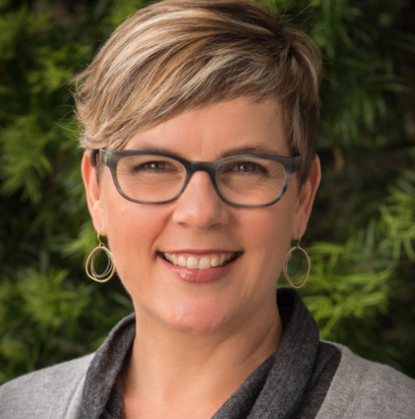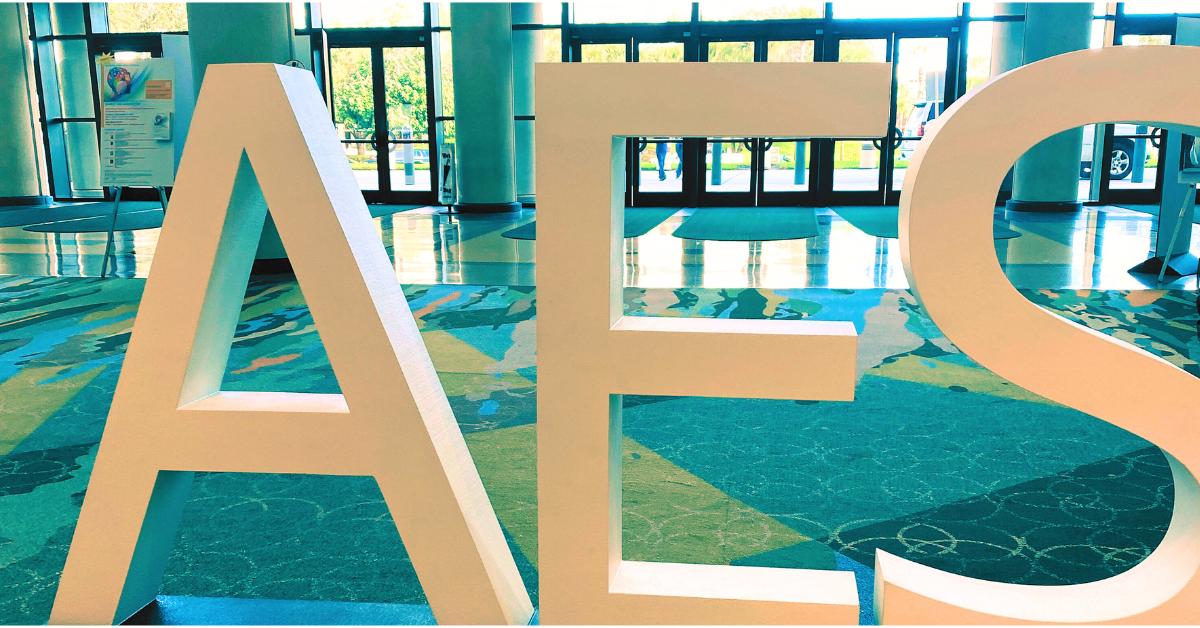I am excited to share some lessons learned from our time at the American Epilepsy Society earlier this month. This is one of the largest epilepsy meetings in the world, with over 6,000 attendees this year. Our team attended a full-day pre-conference convened by the Partners Against Mortality in Epilepsy (PAME), scientific sessions, poster sessions (which are little previews of yet-to-be-published research), a massive exhibitor hall full of industry partners and patient advocacy groups, all sprinkled with events, dinners, and more conversations than I thought possible!
Key Takeaways from the American Epilepsy Society annual meeting
We have to talk about death in epilepsy
There’s no way to sugarcoat it. The risks of increased mortality in epilepsy must be discussed with every patient – a person with epilepsy has a 2-4 times greater risk of dying compared with the general population. Sudden Unexplained Death in Epilepsy (SUDEP) is a very real risk. This is why getting to surgical evaluation on time is important: why would you consider surgery if you don’t understand the very real risks of epilepsy?
Quality of life in children with epilepsy is important to understand
Clinicians, researchers, and families are starting to think about more than just seizure control – what are the improved quality of life outcomes for the whole family when a child’s seizures are reduced or eliminated as a result of epilepsy surgery?
Everyone with epilepsy should have genetic testing
Genetic testing should be provided to every patient with unexplained epilepsy at any age. I’ll share another blog post in January about dilemmas in genetic testing, but it’s important to know that if your child has a genetic epilepsy.
Having a genetic epilepsy does not mean your child cannot have surgery: Even rare epilepsies and genetic syndromes can be treated with epilepsy surgery to provide seizure reduction, seizure control, or improved quality of life.
The Patient Voice Is Loud, And Doctors Are Listening
Those with lived experience have real power. Let me tell you more about some of my favorite sessions that included the patient voice:
Tuberous Sclerosis Complex (TSC) and epilepsy surgery
This session began with parent Rebecca Carroll sharing her son Warren’s long and winding epilepsy surgery journey as a patient with Tuberous Sclerosis Complex (TSC).
Dr. Brenda Porter, Professor of Neurology at Stanford, highlighted the influences in the decision-making process, the importance of the timing of interventions, and next steps to take towards improving access, timelines, and outcomes in epilepsy surgery for TSC. Dr. Porter tried to answer the question of who should have surgery. She shared the current guidelines for the recommendation of epilepsy surgery related to tuberous sclerosis, which states that referral to the presurgical evaluation should be immediate after the failure of two epilepsy medications, and multifocal or bilateral lesions do not preclude you from surgery.
She talked about how she counsels families with TSC. Once a child fails their first epilepsy medication, she starts preparing the family for an epilepsy surgery workup because it can take so long. She wants to shorten the duration of epilepsy before surgery.
Dr. Porter commented that epilepsy surgery isn’t used as much as it should be in patients with TSC who don’t respond to epilepsy medication. She shared studies indicating that waiting too long for epilepsy surgery can negatively affect a child’s thinking, learning, and speaking abilities. She also mentioned that after the surgery, most patients had fewer seizures, and this improvement in seizures was linked to better brain function and thinking skills in some of them.
Finally, she shared that the child’s neurologist has perhaps the most significant impact on the decision to move forward with epilepsy surgery. The family was unlikely to pursue a neurosurgical workup if the child’s neurologist did not recommend it, despite evidence and recommendations that the child should be referred to neurosurgery after two failed epilepsy medications.
Pediatric Epilepsy Case Discussions: Difficult Discussions in the Pediatric Epilepsy Clinic
Dr. Elizabeth Donner from the Hospital for Sick Children in Toronto and Dr. JoJo Yang of UNC-Chapel Hill discussed why, when, and how to discuss SUDEP with patients and their families.
Dr. Ahmad Marashly from Johns Hopkins Hospital went on to share challenges of the epilepsy surgery discussion with families. When surgery is necessary, it’s important for clinicians to approach this topic in the right way.
Some key points from his talk:
- The longer you seize, the bigger the hit on memory and cognition and the less likely surgery will result in seizure control;
- SUDEP rates increase yearly with uncontrolled epilepsy;
- Surgery can improve outcomes;
- The risks of surgery are lower than patients think;
- The decision to perform surgery on a patient is never taken lightly; it is based on extensive pre-surgical testing and an epilepsy surgery conference to discuss the patient with a large team of neurosurgeons, neurologists, epileptologists, and other specialists;
- Surgery outcomes can include seizure control, seizure reduction, or improved developmental outcomes.
In the question and answer session, the panelists and audience discussed how important the conversation about SUDEP and mortality is if families are going to truly understand the risks and benefits of continuing epilepsy medication versus epilepsy surgery for their loved ones.
Presidential Symposium, At the Cutting Edge: Epilepsy Therapies in 2023 and Beyond
Dr. Kelly Knupp of Children’s Hospital Colorado discussed how epilepsy is really “The Epilepsies.” There are many reasons why people have epilepsy, and seizures are often just a symptom of an underlying disorder. She also concluded that epilepsy is a collection of rare diseases and that there are a lot of barriers to studying rare diseases. Rare disease requires collaboration.
Response to medication has not changed over the years. We know that a third or more of all patients with epilepsy will have drug-resistant epilepsy, which may require neurosurgery such as neurostimulation (RNS, DBS, VNS) or other types of surgery. She presented data that shows that epilepsy surgery had a better response rate than managing with epilepsy medication alone: 77% vs 7%, measured by improvement in seizures, quality of life scores, or cognitive outcomes.
“We’re always balancing seizures and quality of life, so a more realistic goal than seizure control is the least amount of seizures possible with the best quality of life possible, with hopefully no side effects. That’s not a realistic goal for many of the patients I see, but we should celebrate it when we get there.”
Psychosocial Comorbidities: Strengthening Multi-Sector Engagement to Address Social Challenges in Epilepsy
When medical professionals fail to meet the complex needs of people with epilepsy and their caregivers, there can be serious, detrimental effects on their health and other outcomes.

Monika Jones, Founder of the Pediatric Epilepsy Surgery Alliance, discussed the Socioeconomic and Psychosocial Factors Affecting Families of Children with Drug-resistant Epilepsy Requiring Surgery. She reviewed disparities in accessing surgical care and parents’ socioeconomic challenges. Parents are overburdened and poorly supported. Caregiver burnout is common. We know that families, especially moms, need additional support, but we also know that it’s unavailable. Parents need counseling on realistic expectations after surgery. We know there are many good outcomes, but there are plenty of kids after epilepsy surgery who have multiple significant disabilities and require a great deal of support.
Dr. Eva Alden, an adult clinical neuropsychologist and assistant professor at Mayo Clinic in Rochester, discussed Education and Learning: Cognitive Comorbidities and Their Impact on Functional Outcomes. She reminded us that seizures are the tip of the iceberg; it’s the comorbidities that patients with epilepsy and their families have to cope with lead to poor functional outcomes, even with seizure freedom or better seizure control.
Cognitive deficits are found in up to 70% of patients before seizure onset, and unsurprisingly, the degree of cognitive impairment is intimately linked with the degree of functional impairment. Children with epilepsy have higher rates of ADHD, intellectual disability, and learning difficulties compared to healthy peers. These things don’t go away when children grow up – patients will carry these challenges into adulthood and impact them across the lifespan. Learning challenges impact adults as much as they impact children. Older adults with epilepsy are also at higher risk of mild cognitive impairment or dementia later in life.
There are very high rates of psychiatric comorbidities in patients with epilepsy:
- depression in up to 50% of the patients
- anxiety in up to 50%
- high rates of suicide and suicidal ideation
- 38% have never seen a mental health professional.
What do we do about it? We need to give people the tools they need to address specific problems they are dealing with so that they can manage their daily function better. Many of these patients will need continued support through adolescence, into early adulthood, and beyond.
“We do not have enough mental health professionals dedicated to patients with epilepsy. It is an urgent need in our field. It’s unfortunate how often I recommend some form of therapy, whether it’s behavioral, adaptive, or cognitive therapy. People do not have access to these things right now, particularly in underserved, under-resourced, and rural areas.”
Dr. Janelle Wagner from the Medical University of South Carolina covered The Impact of Epilepsy on Relationships: Why Should We Care? She discussed how relationships are complex, complicated, messy, and really important to quality of life. Relationships with family members, peers, and healthcare professionals can all impact the overall functioning of patients and families.
Some issues that patients face are:
- parental overprotection for many reasons that make sense,
- a sense of lost independence,
- side effects of treatments that may impact social functioning,
- fears of seizure having a seizure or public incontinence.
People with epilepsy are less likely to be socially engaged, marry, have children, or report rewarding relationships. They have lower employment rates. So, It’s no surprise that many of these patients report poor quality of life.
What can we do about this?
- close collaboration: the importance of an integrated care team,
- improve communication between the provider and the patient and family,
- meaningful promotion of independence,
- collaboration with existing external services,
- cognitive rehab (improves social functioning for patients with epilepsy)
Platform E | Surgery
Michael Granovetter, PhD shared data gathered from the Pediatric Epilepsy Surgery Alliance‘s Global Pediatric Epilepsy Surgery Registry in his presentation “Characterizing Cognitive and Neuropsychological Outcomes Following Pediatric Hemispherectomy.”
We know that pediatric hemispheric surgeries are an effective intervention to control seizures for medically refractory epilepsies. In one recent report, 80% of patients were seizure-free at two years follow-up, and more than half remained seizure-free more than a decade later.
When discussing hemispherectomy with families, they might be concerned about potential cognitive deficits after surgery. So, the researchers wanted to understand the following questions:
- Can a single developing hemisphere reorganize enough to allow functions to take place in one hemisphere?”
- Can cognitive outcomes be predicted from the age of seizure onset, age of surgery, or side of resection?
- Can etiology account for cognitive outcomes?
The researchers found that:
- the age of seizure onset, age of surgery, and side of resection do not predict cognitive outcome after hemispherectomy;
- patients with stroke showed better cognitive outcomes than patients with cortical dysplasia;
- left hemispherectomy might confer a greater risk of aphasia and attention deficit disorder than right hemispherectomy, potentially due to competition of language and attention;
- post hemispherectomy, there are significant neuropsychiatric issues, but there is little follow up with behavioral psychological specialists.
Pediatric State of the Art Symposium | Neonatal Seizures in 2023: New Evidence We’ve Been Waiting For
Betsy Pilon, Director of Hope for HIE Foundation – Hypoxic Ischemic Encephalopathy, shared the parent perspective with her child’s neonatal seizure story and did a wonderful presentation on The Science of Being a Parent.
Overall, I was wildly impressed by the work of the many patient advocacy groups, the Rare Epilepsy Network, and the Epilepsy Leadership Council. I was honored to watch Mary Anne Meskis, Executive Director of the Dravet Syndrome Foundation, receive the AES 2023 Extraordinary Contribution Award during the Hoyer Lecture. I was continually reminded that “the patient’s voice is the loudest and what is listened to!” as Helen Cross stated in her opening lecture at the Partners Against Mortality in Epilepsy (PAME) Meeting.
NOTE: If you want a more scientific take on the 2023 AES conference, please read and follow Dr. Ana Mingorance’s blog: https://www.draccon.com/dracaena-report/aes2023
We’re working hard on the frontlines for you
Over six days, the Pediatric Epilepsy Surgery Alliance team:
- Staffed our booth in the exhibitor hall for three days and spoke with clinicians, researchers, and other patient advocacy organizations from around the world about
- the meaningful programs we provide to families, such as parent support navigators, school training, and our family conference
- why patients need to get to a Level 4 epilepsy center for a surgical evaluation as quickly as possible once the child’s seizures are drug-resistant
- our research and the importance of understanding functional outcomes after surgery;
- Met with industry partners to build collaboration and support for our work; and,
- Participated in scientific sessions to learn more about the risks of epilepsy across the lifespan and advances (and lack of advances) in treatment options.
We also celebrated the publication of the third edition of the definitive medical textbook on epilepsy, the three-volume Epilepsy: A Comprehensive Textbook, in which our founder Monika Jones was invited to write about the importance of the understanding outcomes beyond seizure control after surgery. Amid it all, Monika was quoted in a People Magazine article about Mora Leeb, who had a hemispherectomy as a baby and the magazine highlighted how we help our families navigate the epilepsy surgery journey.
Stay tuned for my next blog post about other topics we learned about at the American Epilepsy Society annual meeting, including genetic testing and mortality in epilepsy.
about the author

Audrey Vernick is our Director of Patient and Family Advocacy. She is the parent of a child who had hemispherectomy for seizures caused by stroke. She holds a level 2 certification in Special Education Advocacy Training from the Council of Parent Attorneys and Advocates and is certified by The ARC in future planning. She also serves on the International League Against Epilepsy’s Social Work and Social Services Section.




